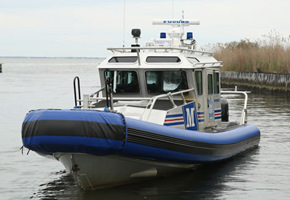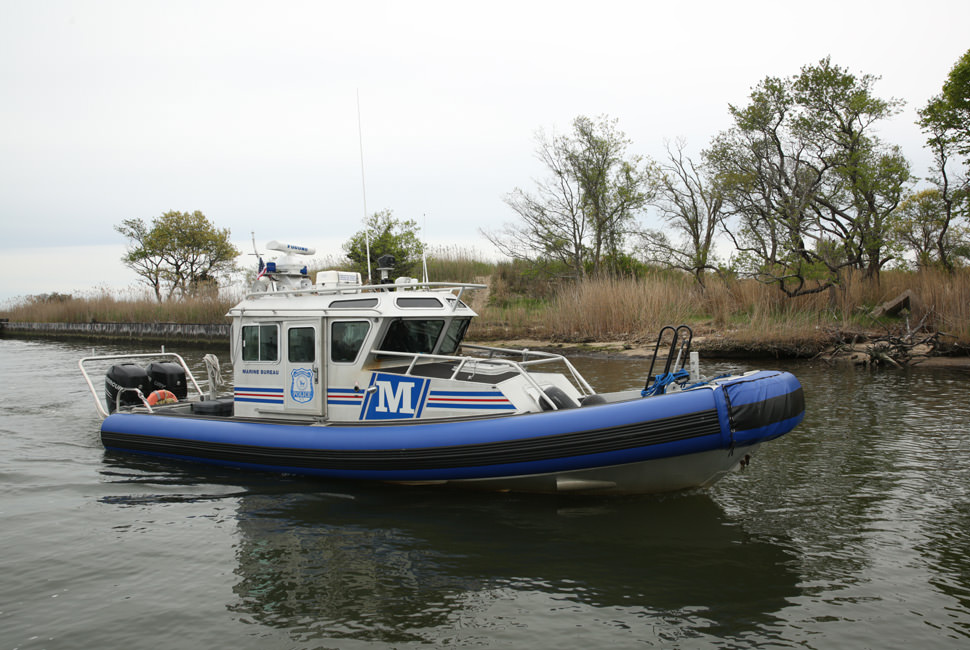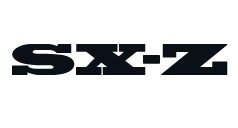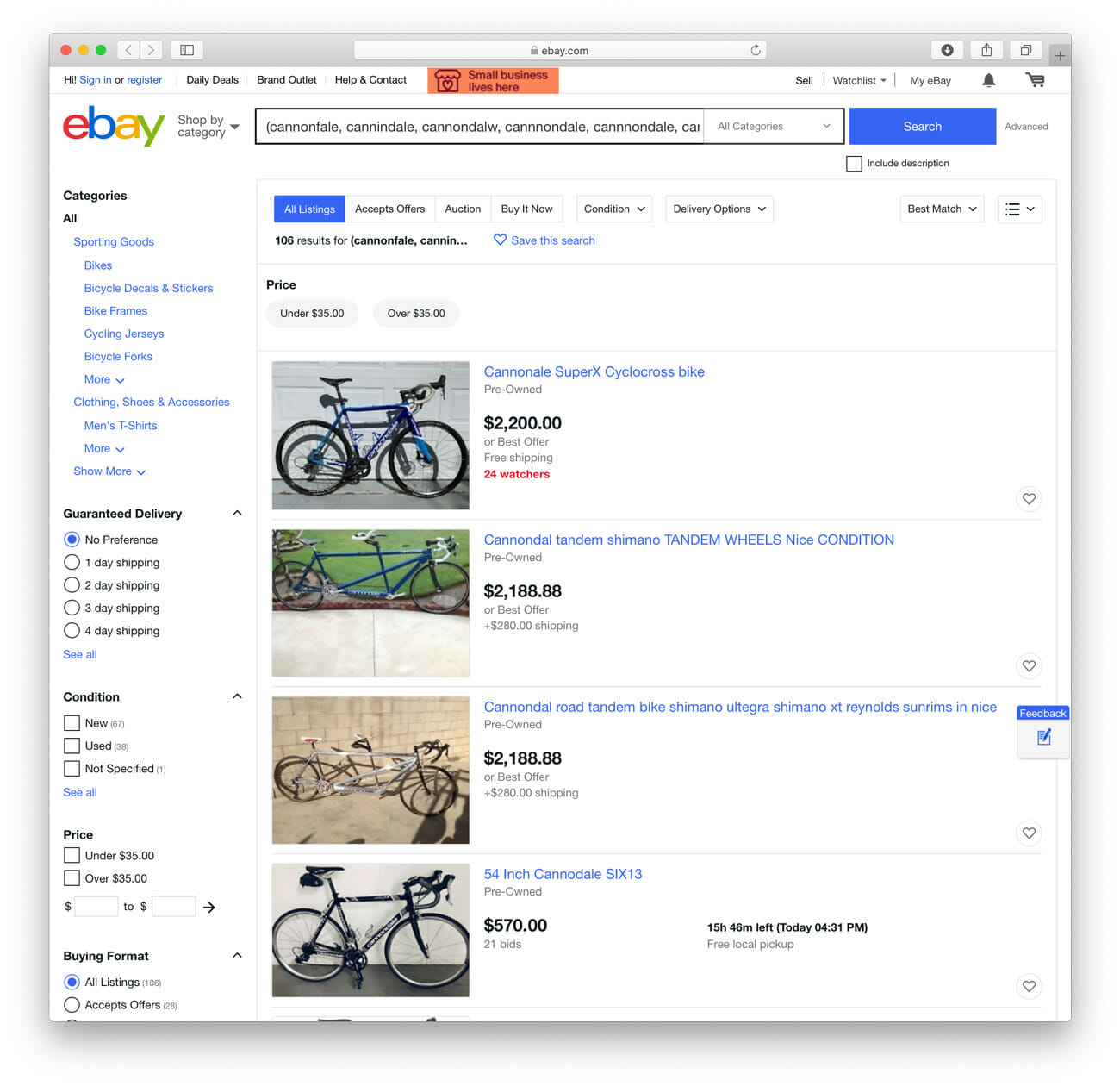SAFE Boats International (SAFE stands for Secure All-around Flotation Equipped) is a marine manufacturer in the Puget Sound area. Some of their clients include military (U.S. Navy, U.S. Marine Corps. and U.S. Air Force), federal agencies (U.S. Department of Homeland Security, U.S. Department of Defense, U.S. Coast Guard and U.S. Customs and Border Protection) and local law enforcement, like the NYPD and the Suffolk County Marine Bureau. The company was founded in 1997 and has become known for making vessels with two distinct traits: aluminum hulls and solid foam collars.
“We have people working for us that have been in the military, under fire in our boats, and they work for us because they believe that strongly in our boats.”
“The idea was to develop a boat and some technologies that were going to be somewhat revolutionary in the marine environment,” says Jenson Charnell, engineering manager at SAFE Boats’ facility in Bremerton, Washington.
Upon its founding, SAFE Boats’ combination of foam collars and aluminum hulls was unique. Traditional military boats had a rigged hull and an inflatable collar, so they had limitations. The collars could be punctured, which could hurt the vessel’s buoyancy, maneuverability and overall performance. And the rigid hulls, usually made out of a composite (like fiberglass and resin), were heavier and created from molds, meaning that they were near impossible to customize. Plus, compared to commercial composite boats, the aluminum hull has a longer life expectancy.
SAFE Boats’ patented foam collars, which fully wrap around almost all of their vessels, help fender the vessels when they come in close proximity to other boats and docks. They add buoyancy as well. If the boat was catastrophically damaged, or flipped over, Charnell said the collars would keep the hull afloat. Secondarily, the foam collars also improved the overall performance, stability and handling of the vessels.
Suffolk County Marine Bureau 31-Foot SAFE Boat


Engine: Twin 300 Mercury Verado motors
Length: 31 feet
Horsepower: 600 horsepower
Top Speed: ~ 46-47 knots (54 mph)
Fuel cap: 300 gallons
Capacity: 26 passengers
Operational load: 13,654 pounds
SAFE Boats started out as a relatively small manufacturer. Over time, aided by its new technologies, the brand started winning bids. In the early 2000s, Charnell says SAFE won a 100-boat contract with the U.S. Coast Guard for the Army HS vessel, a boat that was meant to be carried in a C-130 aircraft. Shortly thereafter, SAFE won a contract with the U.S. Coast Guard to make 440 RB-S vessels, the 25-foot, orange-collared boats that are commonly seen patrolling shallow waters (and shepherding ferries in Suffolk County’s Great South Bay).
“During the time of the RB-S contract, the company itself grew exponentially in size, to well over three hundred people,” said Charnell. “And the size of the boats they took on grew as well.”
The big growth period for the company was between 2002 and 2009. One of its triggers was 9/11, and the country’s subsequent concerns about port and coastline security. According to Richard Schwarz, CFO at SAFE Boats, right after the attack the Coast Guard had a grab bag of hand-me-downs from other agencies and a variety of lightly modified recreational boats. The U.S. needed to significantly upgrade its ability to defend its coastlines and harbors.
“Using the aluminum hull, the solid foam collars [and] the unique performance designs of the hulls,” Schwarz says, “they were able to put together a boat that was night-and-day ahead of anything else out there.”
Around 2009, SAFE Boats started chasing after larger vessel contracts: 60-foot, 65-foot and, their biggest to date, the 85-foot Mark VI for the U.S. Navy. The Mark VI, an all-aluminum patrol boat that’s used in near-shore operations, is one of the only SAFE Boats that does not have the collar. It looks more like a Navy boat, said Schwarz, or like a WWII patrol boat on steroids.


Today, the company’s primary customer is the U.S. government, which deploys a variety of SAFE Boats domestically and worldwide, including in South America, Central America, Africa, the Middle East and the Caribbean. Depending on the mission, these boats are used as riverine crafts — not necessarily in ocean or coastal waters — all the way up to the larger boats, which will operate almost exclusively in coastal waters. The Mark VI was recently deployed to the Middle East by the U.S. Navy, according to Schwarz, where it also operates smaller RCBs (Riverine Command Boats).
“If you have boats traveling through sensitive waterways, or in and out of ports, the SAFE Boats could be used as escorts or reinforced protection,” says Schwarz. “And then [they’re used] for a variety of Special Forces missions… and probably things we don’t know and can’t ask about.”
The big growth period for the company was between 2002 and 2009. One of its triggers was 9/11, and the country’s subsequent concerns about port and coastline security.
As far as weapons, SAFE Boats cannot arm any boat — they’re not licensed to. But that doesn’t stop military and law enforcement from outfitting the boats themselves.
“For smaller law enforcement boats, you probably have no fixed weapon,” says Schwarz. “Most of those would be set up for the passengers with handheld arms.” As the boats get larger, there are more options for permanent weapon mounts. “If you look at the Coast Guard boats, many of them will have guns mounted fore and aft, and when the boats are on patrol you’ll have somebody out there manning those.” The Mark VI has a number of both manned and unmanned weapons mounts: front, aft, both sides and up on top.
If you’re wondering, SAFE Boats does sell recreational boats, although Schwarz says those represent only about 5 percent of the brand’s business. They can range anywhere from 25 to 44 feet, from a rugged fishing boat to a dive boat that can be used in combination with a monster yacht. They can range in price from $100,000 to $1.5 million and up.
SAFE Boats are all made in America. They have two production facilities in Washington state: one in Tacoma, which is dedicated to building the the Mark VI, and their main facility in Bremerton, where they build everything else. So while people say that manufacturing in the U.S. is dying, and that the country can’t compete on exports, Schwarz said SAFE Boats is a testament to the opposite.
“A couple of bright guys who had some really incredible ideas, managed to build a company that’s had a pretty significant impact on the local economy, and then nationally, giving uniformed men and women a platform that keeps them safe,” concludes Schwarz. “We have people working for us that have been in the military, under fire in our boats, and they work for us because they believe that strongly in our boats.”




